How to improve Siberian Iris seed germination*
To me creating your very own plants is the paramount manifestation of love of iris.
I prefer Siberian Iris because they fit in our ecologies and can be the host for many insects and birds. There are hundreds of bearded iris introduced yearly. Not so Siberian Iris which are registered in tens. Form, color and size are open, unbounded by most guidelines. DO some pollen daubing and enjoy creating your own unique plants. Bearded or beardless iris, this is an opportunity to further immerse yourself in nature.
Siberian iris seed requires cold stratification, a chilling and drenching which removes enzymes which delay germination. This can be accomplished by sowing seeds in pots and burying the pots to the rim in the ground over winter. Frost and rainfall soften the seed coat. This nearly natural process is not completely effective and may require several winters to achieve full germination of viable seeds. In the process the seed itself may lose viability.
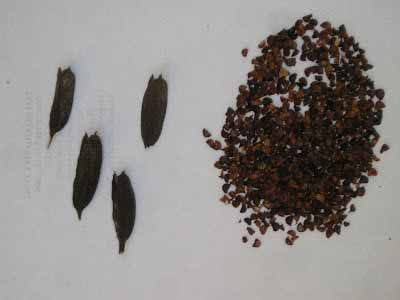
The artificial process described below improves the percentage of seed germination; generally well above 85%, in the first year. I collect the mature seed pods as they begin to split open in fall. I store the collected seed in marked envelopes, one for each cross, and let the seed dry in envelopes, placed in a cool dry location until January. Watch for fungus on the drying seed.
In January, I encase the seeds from each cross into nylons cut into squares and bundle with a color coded twist tie or rubberband. The bundles are stored in margarine containers (typically I mark the container with the crosses inside. I fill the container with tap water to the brim and burp shut.
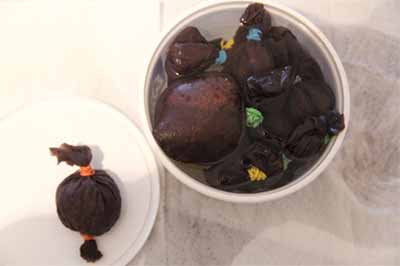
The containers are stored in the refrigerator for a minimum 60 days, generally through mid-April. Typically temperatures should be between 34° and 41°F. The water is replaced on a weekly basis. The water is brownish-green, avoid splashing your eyes! That is the germination inhibiting enzyme being removed. In mid-April I broadcast the seed in pots or trays and move outdoors to germinate as temperatures move from the 50s through 70s. I use a soil mix approximately 60 % peat moss with garden soil, planting the seed just below the surface. I water frequently and sprinkle more peat moss over exposed seed.
To get an additional jump on the growing season I sometimes start the process earlier and germinate seed under grow lights beginning in March. Another approach after cold stratification is to sow seed in small pots which are bagged with pieces of fruit. The ripening fruit releases ethylene gas which aids in germination.
When the seedlings are 6 to 8 inches tall they are transferred to the garden. Space the seedlings roughly 8 to10” apart. Some plants will bloom in the second year but nearly all will bloom in three years.
I have created new beauty for my own enjoyment and given this beauty for others to enjoy. The process creates living works of art. Hybridizing has refined my understanding of color, form, and texture. I have become in tune to the cycle of nature, insects, plants, soil, weather and climate. These are a few of the lessons to be learned.
Here are pictures of Siberian Iris selections lined out either last year or two years ago. Some are being grown for introduction ( one has been ) or as a further breeding source. Some of these plants will never be registered or introduced.
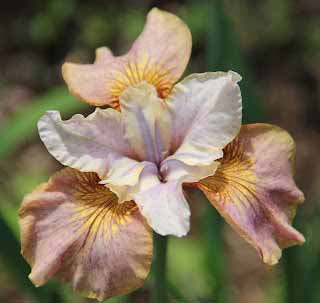 |
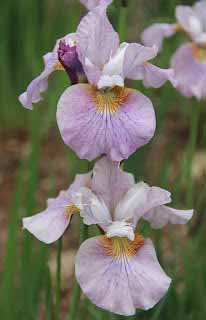 |
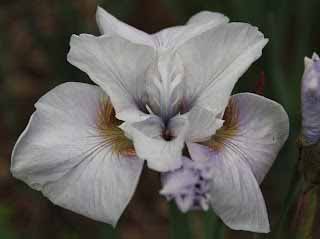 |
 |
* This technique can be used with bearded iris seed also. Soil more alkaline to neutral.
Written by: W. Dougherty